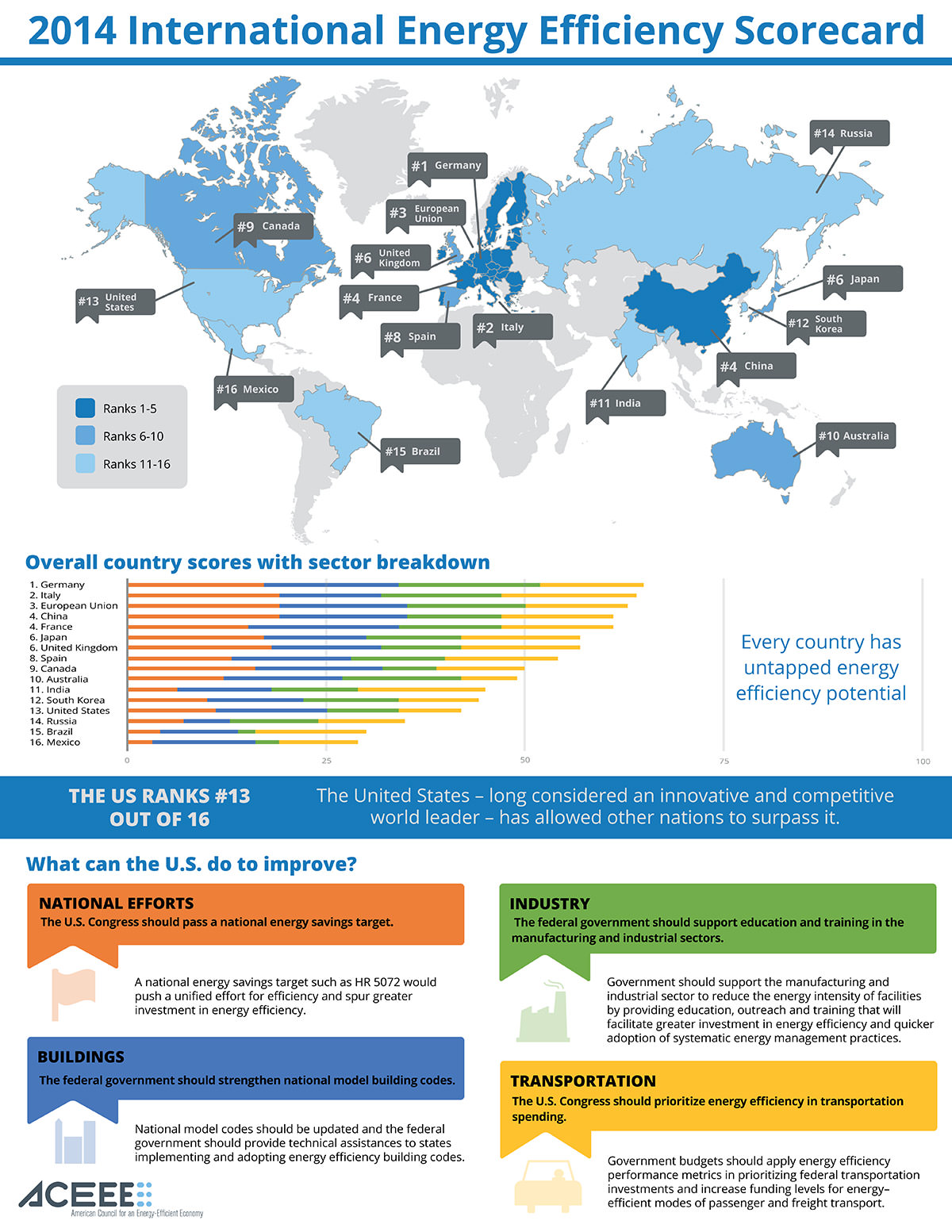If you’ve ever considered energy efficient upgrades for your home, you now have an added incentive. In addition to federal tax credits and rebates, you can now get assistance for financing the improvements with help from Fannie Mae, reports DWM Magazine.
HomeStyle® Energy Mortgage
 HomeStyle® Energy mortgage is a new Fannie Mae option that allows borrowers to finance energy-efficient improvements, such as insulation or window enhancements. Homeowners can borrow up to 15 percent of the appraised, as-completed value of the home in order to purchase the upgrades. Financing is available to both those looking to purchase homes and those who want to update their current homes.
HomeStyle® Energy mortgage is a new Fannie Mae option that allows borrowers to finance energy-efficient improvements, such as insulation or window enhancements. Homeowners can borrow up to 15 percent of the appraised, as-completed value of the home in order to purchase the upgrades. Financing is available to both those looking to purchase homes and those who want to update their current homes.
Where to Find It
 HomeStyle Energy mortgage is available from all approved Fannie Mae lenders. Borrowers can finance up to $3,500 in upgrades without an energy report, or upgrades above this limit with an energy report. Lenders are required to place funds into an escrow account.
HomeStyle Energy mortgage is available from all approved Fannie Mae lenders. Borrowers can finance up to $3,500 in upgrades without an energy report, or upgrades above this limit with an energy report. Lenders are required to place funds into an escrow account.
Why It Makes Sense
 According to Fannie Mae senior vice president and chief credit officer, Carlos Perez, “HomeStyle Energy mortgage will be particularly helpful to borrowers who want to pay off debt for existing energy improvements. It will also benefit homeowners who want to make their home more comfortable and efficient.”
According to Fannie Mae senior vice president and chief credit officer, Carlos Perez, “HomeStyle Energy mortgage will be particularly helpful to borrowers who want to pay off debt for existing energy improvements. It will also benefit homeowners who want to make their home more comfortable and efficient.”
An article in Mother Earth News further validates the investment, explaining that, “Home energy efficiency improvements are good for your bank account, too, because money you invest in energy efficiency or renewable energy systems will pay off over time in reduced energy bills.”
What You Should Know Before Applying
 In addition to making these loans available, Fannie Mae also makes them more affordable than typical home equity lines of credit, unsecured loans or vendor loans. Although most Property Assessed Clean Energy (PACE) loans aren’t eligible for Fannie Mae mortgages, they can be paid off using this option.
In addition to making these loans available, Fannie Mae also makes them more affordable than typical home equity lines of credit, unsecured loans or vendor loans. Although most Property Assessed Clean Energy (PACE) loans aren’t eligible for Fannie Mae mortgages, they can be paid off using this option.
Learn more about HomeStyle Energy mortgage from Fannie Mae, or explore additional financing options and federal incentives offered for energy efficient upgrades.


 Summer brings us hotter temperatures and high travel season, so we’ve compiled a few links with some summer energy-saving tips for your reference below. Stay cool and happy travels!
Summer brings us hotter temperatures and high travel season, so we’ve compiled a few links with some summer energy-saving tips for your reference below. Stay cool and happy travels! Approximately 40 percent of a home’s heat comes through its windows. By bouncing solar energy back and away from the interior, window films provide a home or other building with a “solar shield,” cutting cooling costs by as much as 30 percent.
Approximately 40 percent of a home’s heat comes through its windows. By bouncing solar energy back and away from the interior, window films provide a home or other building with a “solar shield,” cutting cooling costs by as much as 30 percent. While almost any window film will provide heat rejection, today’s modern, high quality window films filter out damaging UV rays yet still allow visible light to penetrate the film’s surface. Although heat-causing solar energy is reflected back outside, creating energy savings, light is allowed to penetrate the film, preserving interior aesthetics. Not to mention preserving the enjoyment of beautiful views!
While almost any window film will provide heat rejection, today’s modern, high quality window films filter out damaging UV rays yet still allow visible light to penetrate the film’s surface. Although heat-causing solar energy is reflected back outside, creating energy savings, light is allowed to penetrate the film, preserving interior aesthetics. Not to mention preserving the enjoyment of beautiful views! The harmful effects of sunlight add up, not just in terms of energy costs, but also in damage to furnishings. Window film protects valuable fabrics and art from damaging ultraviolet rays that cause fading. This can potentially save thousands of dollars in replacement costs. Also, a variety of styles and hues make window films an architectural enhancement that can increase a building’s design value. Some homes will even qualify for a tax credit.
The harmful effects of sunlight add up, not just in terms of energy costs, but also in damage to furnishings. Window film protects valuable fabrics and art from damaging ultraviolet rays that cause fading. This can potentially save thousands of dollars in replacement costs. Also, a variety of styles and hues make window films an architectural enhancement that can increase a building’s design value. Some homes will even qualify for a tax credit. Aside from its heat rejection capabilities, window film offers a number of valuable benefits. First, it protects occupants from damaging UV rays and the glare that leads to eye fatigue. These same films allow more natural light to filter through and help reduce the need for artificial lighting. Second, window film helps to eliminate hot spots within a space, regulating the temperature and eliminating the need to run the air conditioning as frequently.
Aside from its heat rejection capabilities, window film offers a number of valuable benefits. First, it protects occupants from damaging UV rays and the glare that leads to eye fatigue. These same films allow more natural light to filter through and help reduce the need for artificial lighting. Second, window film helps to eliminate hot spots within a space, regulating the temperature and eliminating the need to run the air conditioning as frequently. For the second year in a row, Washington, D.C., took the top honor as the city with the most ENERGY STAR buildings for 2015. It was followed by Los Angeles and San Francisco. Atlanta and NYC rounded out the top five.
For the second year in a row, Washington, D.C., took the top honor as the city with the most ENERGY STAR buildings for 2015. It was followed by Los Angeles and San Francisco. Atlanta and NYC rounded out the top five. The ENERGY STAR survey ranked each city on the energy efficiency of its buildings. The top cities’ energy savings added up to millions of dollars, while also sparing the environment. The EPA claims that city buildings consume over two-thirds of the world’s energy, even while taking up just two percent of the global landmass.
The ENERGY STAR survey ranked each city on the energy efficiency of its buildings. The top cities’ energy savings added up to millions of dollars, while also sparing the environment. The EPA claims that city buildings consume over two-thirds of the world’s energy, even while taking up just two percent of the global landmass. By reducing emissions via energy efficiency, ENERGY STAR rated buildings have saved more than $3.8 billion since 1999. The EPA explains, it would take roughly 2.6 million homes to prevent the same amount of greenhouse gas emissions.
By reducing emissions via energy efficiency, ENERGY STAR rated buildings have saved more than $3.8 billion since 1999. The EPA explains, it would take roughly 2.6 million homes to prevent the same amount of greenhouse gas emissions. Energy efficiency in city buildings not only contributes to cleaner air and healthier communities, it also improves the economy. EPA Administrator Gina McCarthy explains, “Money saved on energy bills can boost the bottom line and be reinvested.”
Energy efficiency in city buildings not only contributes to cleaner air and healthier communities, it also improves the economy. EPA Administrator Gina McCarthy explains, “Money saved on energy bills can boost the bottom line and be reinvested.” It’s not just the major metro areas making an energy impact. Smaller cities are doing their part, too. San Jose, Honolulu, and Virginia Beach took top honors for mid-size cities. Midland, Texas, Sioux City, Iowa, and Martinsville, Virginia, were the top three small cities.
It’s not just the major metro areas making an energy impact. Smaller cities are doing their part, too. San Jose, Honolulu, and Virginia Beach took top honors for mid-size cities. Midland, Texas, Sioux City, Iowa, and Martinsville, Virginia, were the top three small cities. Greener, albeit fake, grass has quickly become an acceptable alternative to natural grass for many Californians. The artificial turf business in the Golden State is booming as a result, according to an
Greener, albeit fake, grass has quickly become an acceptable alternative to natural grass for many Californians. The artificial turf business in the Golden State is booming as a result, according to an  Governor Jerry Brown last year ordered the state’s first mandatory watering restrictions in history. Lawn watering typically accounts for one-third of urban water use, so lawns are a natural choice for reducing water consumption. Since the restrictions took effect, business has grown nonstop for local turf manufacturers and retailers.
Governor Jerry Brown last year ordered the state’s first mandatory watering restrictions in history. Lawn watering typically accounts for one-third of urban water use, so lawns are a natural choice for reducing water consumption. Since the restrictions took effect, business has grown nonstop for local turf manufacturers and retailers. The market ranges from celebrities to the middle-class – pretty much anyone who values a greener lawn while staying within the state’s stringent watering restrictions. Those who’ve tried artificial grass claim newer versions far surpass the original AstroTurf, bearing a much closer resemblance to lush, natural grass – only without the constant need for watering and mowing.
The market ranges from celebrities to the middle-class – pretty much anyone who values a greener lawn while staying within the state’s stringent watering restrictions. Those who’ve tried artificial grass claim newer versions far surpass the original AstroTurf, bearing a much closer resemblance to lush, natural grass – only without the constant need for watering and mowing. Not everyone thinks artificial grass is a good solution. Oddly, they cite the environment as the reason. Many conservation groups insist that artificial turf does little to foster soil health. Nor is it easily recycled. Some argue it can lead to excessive water runoff. To add to these concerns, the U.S. Environmental Protection Agency has begun an investigation into the possible health risks of artificial turf used on playing fields.
Not everyone thinks artificial grass is a good solution. Oddly, they cite the environment as the reason. Many conservation groups insist that artificial turf does little to foster soil health. Nor is it easily recycled. Some argue it can lead to excessive water runoff. To add to these concerns, the U.S. Environmental Protection Agency has begun an investigation into the possible health risks of artificial turf used on playing fields. When many buildings in a community have cool roofs, it can lesson what is called the “urban heat island effect,” which is the phenomenon of buildings soaking up the sun’s radiation and then re-radiating that heat after sundown. According to the
When many buildings in a community have cool roofs, it can lesson what is called the “urban heat island effect,” which is the phenomenon of buildings soaking up the sun’s radiation and then re-radiating that heat after sundown. According to the  Many types of cool roofs are the same price as standard roofs and some utility companies offer rebates. Beyond that, you’ll enjoy savings from a lower air-conditioning bill year after year. You can also receive up to $500 in a federal tax credit for a cool roof.
Many types of cool roofs are the same price as standard roofs and some utility companies offer rebates. Beyond that, you’ll enjoy savings from a lower air-conditioning bill year after year. You can also receive up to $500 in a federal tax credit for a cool roof.  There are many different cool roof systems for both existing and new roofs. They all use thick coatings with reflective pigments. Some also offer restorative features and water protection. The Cool Roof Rating Council is a nonprofit organization that was created to conduct third-party tests and give accurate ratings on cool roof systems. You can search their
There are many different cool roof systems for both existing and new roofs. They all use thick coatings with reflective pigments. Some also offer restorative features and water protection. The Cool Roof Rating Council is a nonprofit organization that was created to conduct third-party tests and give accurate ratings on cool roof systems. You can search their  You can also use reflective paint on your exterior walls to cool your house – especially if you live in a warm climate. These “cool paints” are on the Federal Energy Management Program’s Promising Technologies List, which prioritizes technologies that help save energy but are underused.
You can also use reflective paint on your exterior walls to cool your house – especially if you live in a warm climate. These “cool paints” are on the Federal Energy Management Program’s Promising Technologies List, which prioritizes technologies that help save energy but are underused. The United States ranked 13th out of 16, surpassed by both China and India. The only economies that ranked below the U.S. were Russia, Brazil, and Mexico. The rankings are calculated by a variety of metrics, mainly focusing on the sectors most responsible for consuming energy in these economically developed countries: transportation, industry, and buildings. One reason America ranked so poorly is transportation. Not only do Americans drive more than anyone else ranked, they also came in last place for using public transportation.
The United States ranked 13th out of 16, surpassed by both China and India. The only economies that ranked below the U.S. were Russia, Brazil, and Mexico. The rankings are calculated by a variety of metrics, mainly focusing on the sectors most responsible for consuming energy in these economically developed countries: transportation, industry, and buildings. One reason America ranked so poorly is transportation. Not only do Americans drive more than anyone else ranked, they also came in last place for using public transportation.
 Germany took top honors, followed by Italy, the European Union as a whole, China, and France. Germany’s Dr. Philipp Ackermann commented that “every kilowatt hour of electricity that is not consumed saves on fossil fuels and the construction of power plants and grids.” This speaks to a possible overall economic advantage over the U.S. because, according to the report, “using less energy to produce and transport the same economic output costs them less. Their efforts to improve efficiency likely make their economies more nimble and resilient.”
Germany took top honors, followed by Italy, the European Union as a whole, China, and France. Germany’s Dr. Philipp Ackermann commented that “every kilowatt hour of electricity that is not consumed saves on fossil fuels and the construction of power plants and grids.” This speaks to a possible overall economic advantage over the U.S. because, according to the report, “using less energy to produce and transport the same economic output costs them less. Their efforts to improve efficiency likely make their economies more nimble and resilient.” Basically, that would be the additional annual cost to U.S. viewers’ utility bills if everyone switched to UHD TVs without the energy-efficient bells and whistles. However, there are some UHD models, such as
Basically, that would be the additional annual cost to U.S. viewers’ utility bills if everyone switched to UHD TVs without the energy-efficient bells and whistles. However, there are some UHD models, such as  If you’re thinking about buying a UHD TV, the simplest thing you can do is buy an ENERGY STAR certified one. You can shop using filters on
If you’re thinking about buying a UHD TV, the simplest thing you can do is buy an ENERGY STAR certified one. You can shop using filters on  Cree’s new 9.5-watt LED Soft White looks just like a traditional bulb. It fits into standard-size outlets. And it operates just as a traditional bulb would – lights immediately in all directions and dims without buzzing. But it uses up to 84% less energy, which earned it the trusted
Cree’s new 9.5-watt LED Soft White looks just like a traditional bulb. It fits into standard-size outlets. And it operates just as a traditional bulb would – lights immediately in all directions and dims without buzzing. But it uses up to 84% less energy, which earned it the trusted 
 The U.S. Department of Energy and the U.S. Environmental Protection Agency set strict guidelines for products to prevent greenhouse gas emissions.
The U.S. Department of Energy and the U.S. Environmental Protection Agency set strict guidelines for products to prevent greenhouse gas emissions. 

 DSIRE – a nationally-funded initiative at the N.C. Clean Energy Technology Center at N.C. State University – makes it easy to see what incentives are available in your particular state with an interactive map of the U.S. You click on your state, choose a program type and a technology, then a list of incentives appears. It also lists the latest policies that promote energy efficiency and renewable energy. Updated in real-time through database content, it’s the most comprehensive resource of this type of information in the nation.
DSIRE – a nationally-funded initiative at the N.C. Clean Energy Technology Center at N.C. State University – makes it easy to see what incentives are available in your particular state with an interactive map of the U.S. You click on your state, choose a program type and a technology, then a list of incentives appears. It also lists the latest policies that promote energy efficiency and renewable energy. Updated in real-time through database content, it’s the most comprehensive resource of this type of information in the nation.